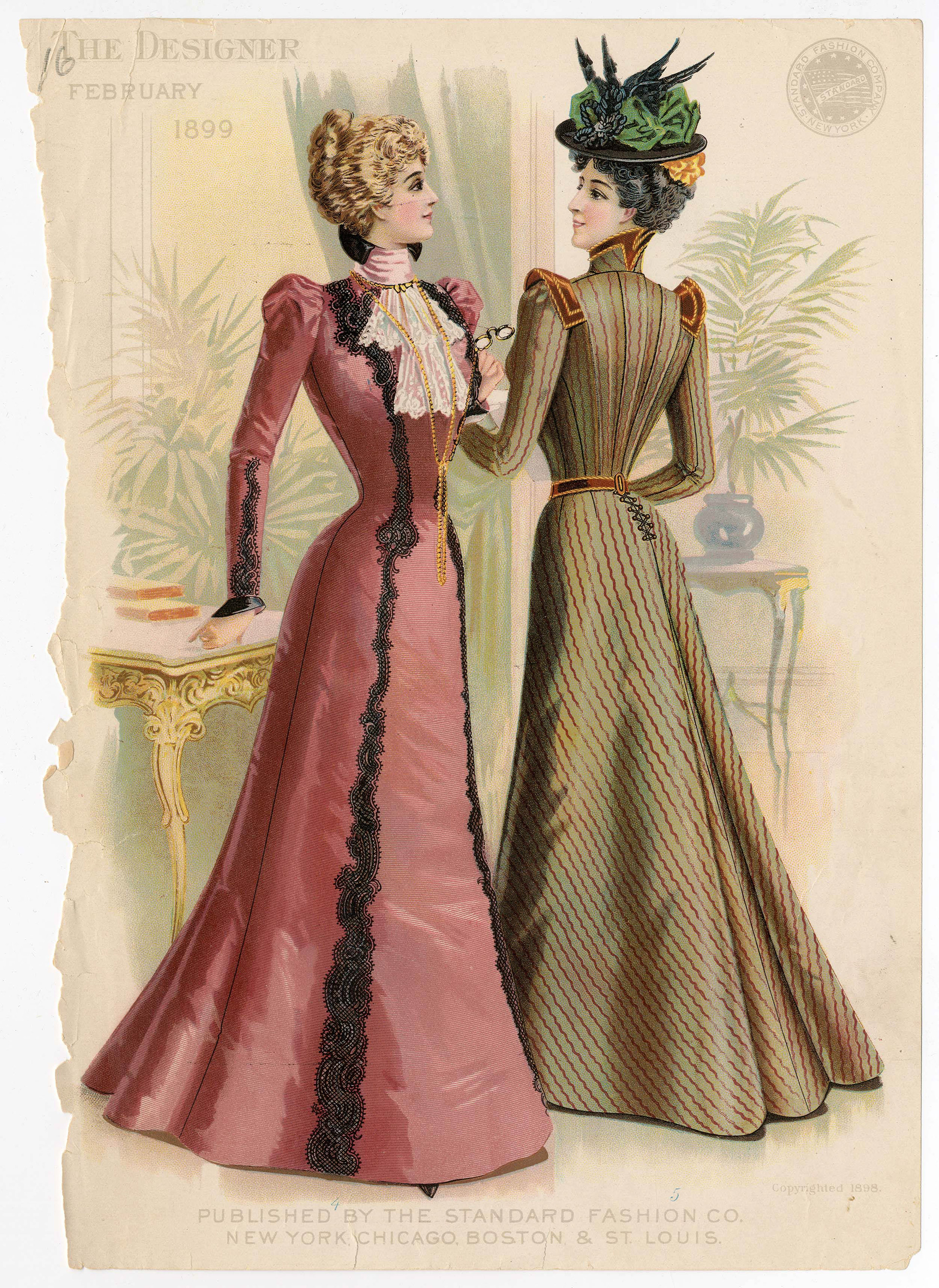1862 Fashion Plate
In the early 1860s, the skirts that women wore were ample and full and were supported with multiple petticoats that were gored to throw out the skirts at the bottom. These skirts looked even bigger when compared to the small, tightly-corseted waist.
The goal was to get the dress to drape gracefully outward into the shape of a triangle. These dresses were either floor length or several inches above the ground, with bodices buttoned down the front. Skirts during that time were rarely seen plain and rather were often decorated with soutache or braiding.
The bodices were boned during this period and fitted with darts and seaming to give the bodice a snug fit. Shoulders were long and sloping with the armscye high and tight around the upper arm.
As the decade continued the shape of the skirt changed. About 1864 the skirt became flat in the front and had a bulk of the fabric extend backward. Most dresses began to have short trains in the back but cleared the floor in the front. The effect of looping the skirt became popular, which is when the overskirt is pulled up at intervals around the skirt and pulled up with cording. This effect required there to be an underskirt that was often decorated, since it would be exposed when the overskirt was fastened up.
1867 Fashion Plate
One-piece dresses also became popular. It was fashionable for them to have either an empire waistline or princess seams, which did not have waistlines. False yokes could also be seen on many dresses.
In the late 1860s the bodices changed to basques, which extended past the waist ending at the hips., The is compared with the short-waisted bodice from earlier that decade. Necklines were high throughout the 1860s and were adorned with collars.
Overall the silhouette of the dresses in the 1860s changed considerably, starting off with a skirt that was even in fullness and ending with a skirt with the fullness concentrated in the back.
1864 Fashion Plate

1885 Fashion Plate

